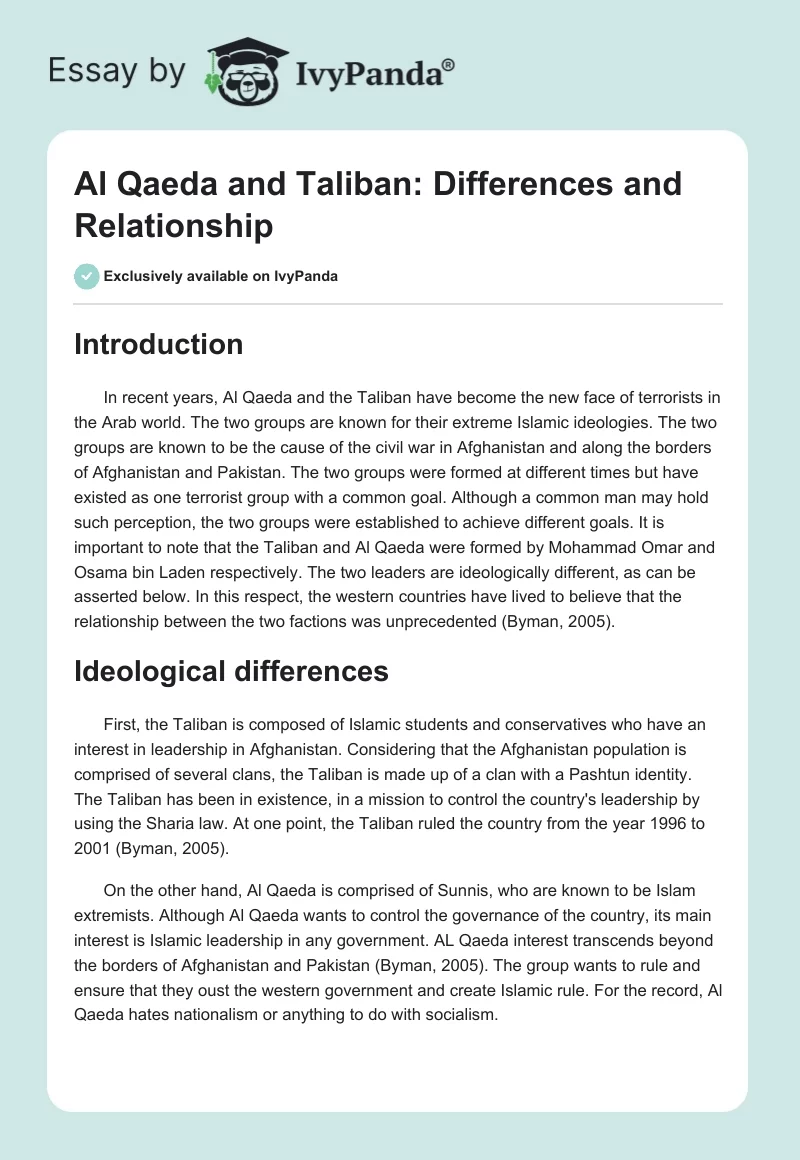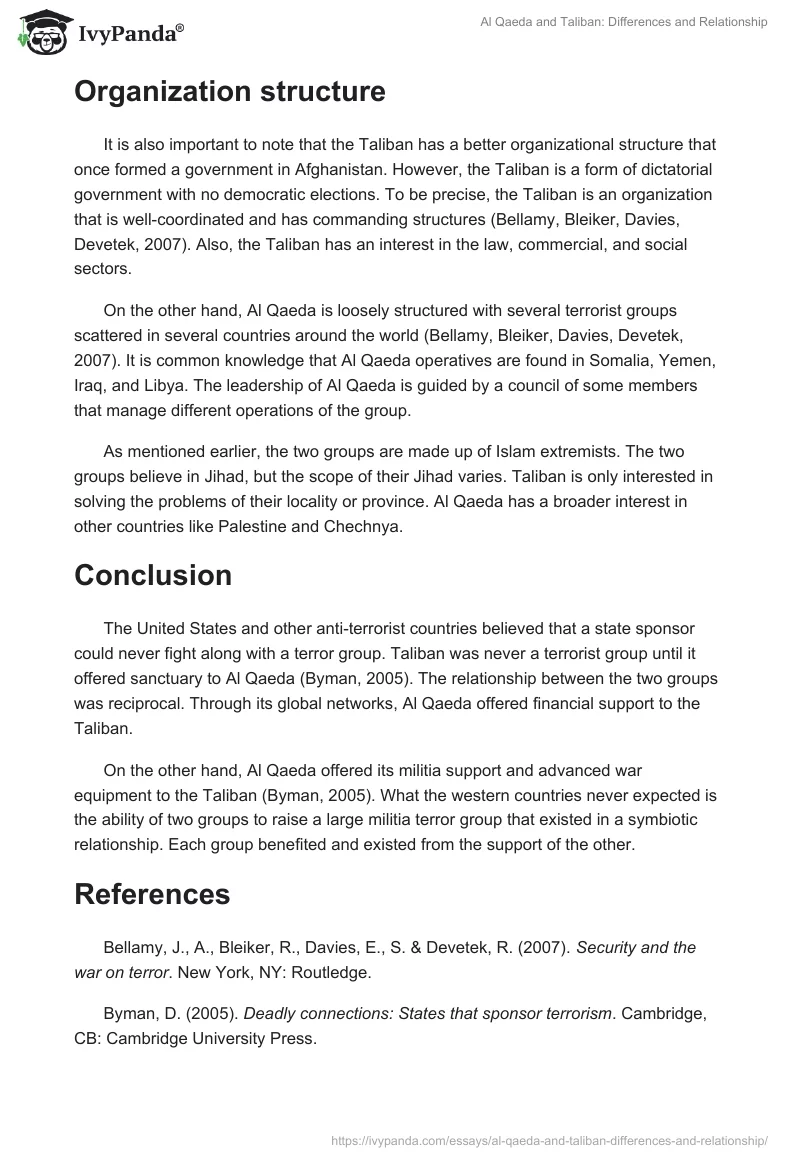Introduction
In recent years, Al Qaeda and the Taliban have become the new face of terrorists in the Arab world. The two groups are known for their extreme Islamic ideologies. The two groups are known to be the cause of the civil war in Afghanistan and along the borders of Afghanistan and Pakistan. The two groups were formed at different times but have existed as one terrorist group with a common goal. Although a common man may hold such perception, the two groups were established to achieve different goals. It is important to note that the Taliban and Al Qaeda were formed by Mohammad Omar and Osama bin Laden respectively. The two leaders are ideologically different, as can be asserted below. In this respect, the western countries have lived to believe that the relationship between the two factions was unprecedented (Byman, 2005).
Ideological differences
First, the Taliban is composed of Islamic students and conservatives who have an interest in leadership in Afghanistan. Considering that the Afghanistan population is comprised of several clans, the Taliban is made up of a clan with a Pashtun identity. The Taliban has been in existence, in a mission to control the country’s leadership by using the Sharia law. At one point, the Taliban ruled the country from the year 1996 to 2001 (Byman, 2005).
On the other hand, Al Qaeda is comprised of Sunnis, who are known to be Islam extremists. Although Al Qaeda wants to control the governance of the country, its main interest is Islamic leadership in any government. AL Qaeda interest transcends beyond the borders of Afghanistan and Pakistan (Byman, 2005). The group wants to rule and ensure that they oust the western government and create Islamic rule. For the record, Al Qaeda hates nationalism or anything to do with socialism.
Organization structure
It is also important to note that the Taliban has a better organizational structure that once formed a government in Afghanistan. However, the Taliban is a form of dictatorial government with no democratic elections. To be precise, the Taliban is an organization that is well-coordinated and has commanding structures (Bellamy, Bleiker, Davies, Devetek, 2007). Also, the Taliban has an interest in the law, commercial, and social sectors.
On the other hand, Al Qaeda is loosely structured with several terrorist groups scattered in several countries around the world (Bellamy, Bleiker, Davies, Devetek, 2007). It is common knowledge that Al Qaeda operatives are found in Somalia, Yemen, Iraq, and Libya. The leadership of Al Qaeda is guided by a council of some members that manage different operations of the group.
As mentioned earlier, the two groups are made up of Islam extremists. The two groups believe in Jihad, but the scope of their Jihad varies. Taliban is only interested in solving the problems of their locality or province. Al Qaeda has a broader interest in other countries like Palestine and Chechnya.
Conclusion
The United States and other anti-terrorist countries believed that a state sponsor could never fight along with a terror group. Taliban was never a terrorist group until it offered sanctuary to Al Qaeda (Byman, 2005). The relationship between the two groups was reciprocal. Through its global networks, Al Qaeda offered financial support to the Taliban.
On the other hand, Al Qaeda offered its militia support and advanced war equipment to the Taliban (Byman, 2005). What the western countries never expected is the ability of two groups to raise a large militia terror group that existed in a symbiotic relationship. Each group benefited and existed from the support of the other.
References
Bellamy, J., A., Bleiker, R., Davies, E., S. & Devetek, R. (2007). Security and the war on terror. New York, NY: Routledge.
Byman, D. (2005). Deadly connections: States that sponsor terrorism. Cambridge, CB: Cambridge University Press.


